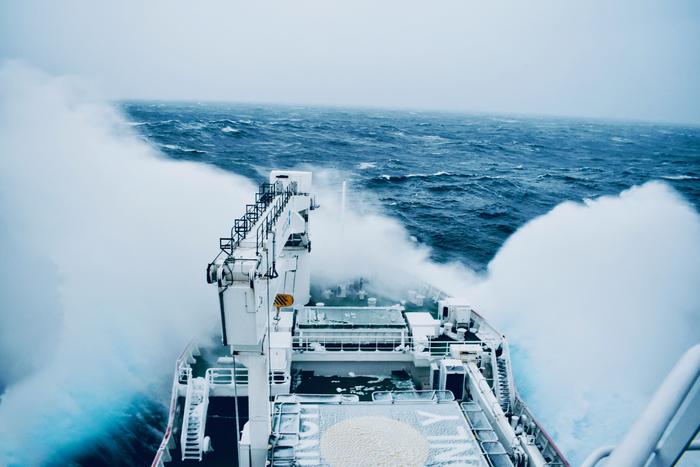A University of Melbourne expedition to the southernmost waters encircling Antarctica has discovered that wind drives the formation of colossal rogue waves, and that these unpredictable waves occur more frequently than scientists had previously thought – providing critical information to inform future rogue wave prediction models.

Credit: Professor Alessandro Toffoli
A University of Melbourne expedition to the southernmost waters encircling Antarctica has discovered that wind drives the formation of colossal rogue waves, and that these unpredictable waves occur more frequently than scientists had previously thought – providing critical information to inform future rogue wave prediction models.
A rogue wave is a single swell that is much higher than nearby waves, which can damage ships or coastal infrastructure. Ocean waves are among the most powerful natural forces on Earth, and as global trends suggest ocean winds will blow harder because of climate change, ocean waves could become more powerful.
In a study recently published in Physical Review Letters, the research team led by Professor Alessandro Toffoli found that rogue waves emerge from strong wind forces and unpredictable waveform patterns, confirming an idea previously only demonstrated in laboratory experiments.
Professor Toffoli said “rogue waves are colossi – twice as high as neighbouring waves – that appear seemingly out of nowhere.”
Using state-of-the-art technology and embarking on an expedition to one of Earth’s most volatile oceanic realms, the research team deployed a novel technique for three-dimensional imaging of ocean waves. Operating stereo cameras aboard the South African icebreaker SA Agulhas II during the Antarctic expedition in 2017, they captured rare insights into the behaviour of waves in this remote region.
Their method, mimicking human vision through sequential imaging, allowed the team to reconstruct the wavy ocean surface in three dimensions, providing unprecedented clarity into the dynamics of ocean waves.
The first scientific measurement of a rogue wave was the 25.6 metre Draupner wave, recorded in the North Sea in 1995. 16 suspected rogue wave incidents have been reported in the 21st century.
“Antarctica’s choppy seas and wild winds can cause large waves to ‘self amplify,’ resulting in rogue wave frequency scientists had theorised for years, but could not yet verify in the ocean,” Professor Toffoli said.
Drawing upon numerical and laboratory studies, which had suggested the role of wind in the formation of rogue waves, the research team’s observations have provided validation of these theories in the actual oceanic environment.
“Our observations now show that unique sea conditions with rogue waves arise during the ‘young’ stage of waves – when they are most responsive to wind. This suggests wind parameters are the missing link,” Prof Toffoli said.
“The wind creates a chaotic situation where waves of different dimensions and directions coexist. Wind causes young waves to grow higher, longer and faster. During this self-amplification, a wave grows disproportionately at the expense of its neighbours.
“We show young waves display signs of self-amplifying and more likelihood of becoming rogue because of the wind. We recorded waves twice as high as their neighbours once every six hours,” Professor Toffoli said.
“This mirrors lab models: that sea conditions theoretically more prone to self-amplification produce more rogue waves. In contrast, we detected no rogue waves in mature seas, which are not affected by wind.
Professor Toffoli emphasised the critical importance of integrating wind dynamics into predictive models for rogue wave forecasting.
“This shows that when developing tools for predicting rogue waves, scientists need to take wind into thorough consideration.”
Media enquiries: Claire Whiteley | +61 427 984 122 | claire.whiteley@unimelb.edu.au
Journal
Physical Review Letters
Method of Research
Imaging analysis
Subject of Research
Not applicable
Article Title
Observations of Rogue Seas in the Southern Ocean
Article Publication Date
12-Apr-2024
COI Statement
The authors have no conflict of interest to declare.



